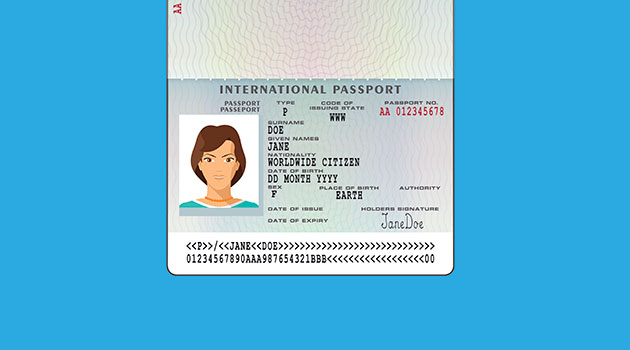Let’s try something. Say “cheese!”
Now, if you’re taking a U.S. passport photo, say “cheese” and then affect a “neutral facial expression”; however, you can use a soft, “natural smile” if preferred.
Grinning ear to ear? Didn’t think so.
In much of the world, passport-issuing agencies ask hopeful passport applicants to look at the camera without an expression, or maybe with a “natural smile,” as the U.S. State Department directs. In the United Kingdom, directions are even less fun: “In your photo, you must have a neutral expression and your mouth closed.”
Nothing says, “Let’s travel the world and meet new and exciting people!” like a closed-mouth, neutral expression.
However, a recent study released by researchers at the University of York in the U.K. may change that.
When IDs feature faces with big, open-mouthed smiles, it’s easier for people to match the photo on the card to another photo of the person or to the person themselves, according to the report.
This could aid authorities in pinpointing people using IDs that do not belong to them, the study’s authors report.
IDs with open-mouthed smiles are easier to match to another photo of the person or the person themselves, according to the report.
“Photo ID is a significant part of our lives, and yet we know that the human brain has a hard time matching photos of people to other photos, and matching photos with the real-life person,” said Dr. Mila Mileva from the University of York’s Department of Psychology. “Identity fraud is a real problem on many levels, so it is important that we do more research in this area to see how we can improve methods of identification.”
Mileva’s team asked 40 participants to match 60 images of people showing neutral expressions with photos of those same people smiling openly, as well as images of people with closed smiles.
In a companion test, 34 people were asked to match images of people who had open-mouth smiles and images of people with closed-mouth smiles.
Researchers found a 9% improvement in accurately matching the photos when the subject had an open-mouthed smile.
“Our research suggests that replacing the neutral expression we usually use when taking identification photographs with an open-mouth smile can make face matching an easier decision,” Dr. MIleva said. “As soon as there’s a mismatch in emotional expression—comparing a smiling and a neutral image, for example—the matching accuracy drops substantially.”
Researchers also found that seeing smiles can help differentiate between similar-looking people in a version of the study only featuring the lower halves of people’s faces.
Whether this will spark a change to the no-smiling (or modestly smiling) rules in the U.S. or U.K. may be a different matter, however. While people are better at identifying smiling faces, facial-recognition technology works better with a closed mouth, said a representative of the U.K.’s Home Office.
Robots ruin everything.
